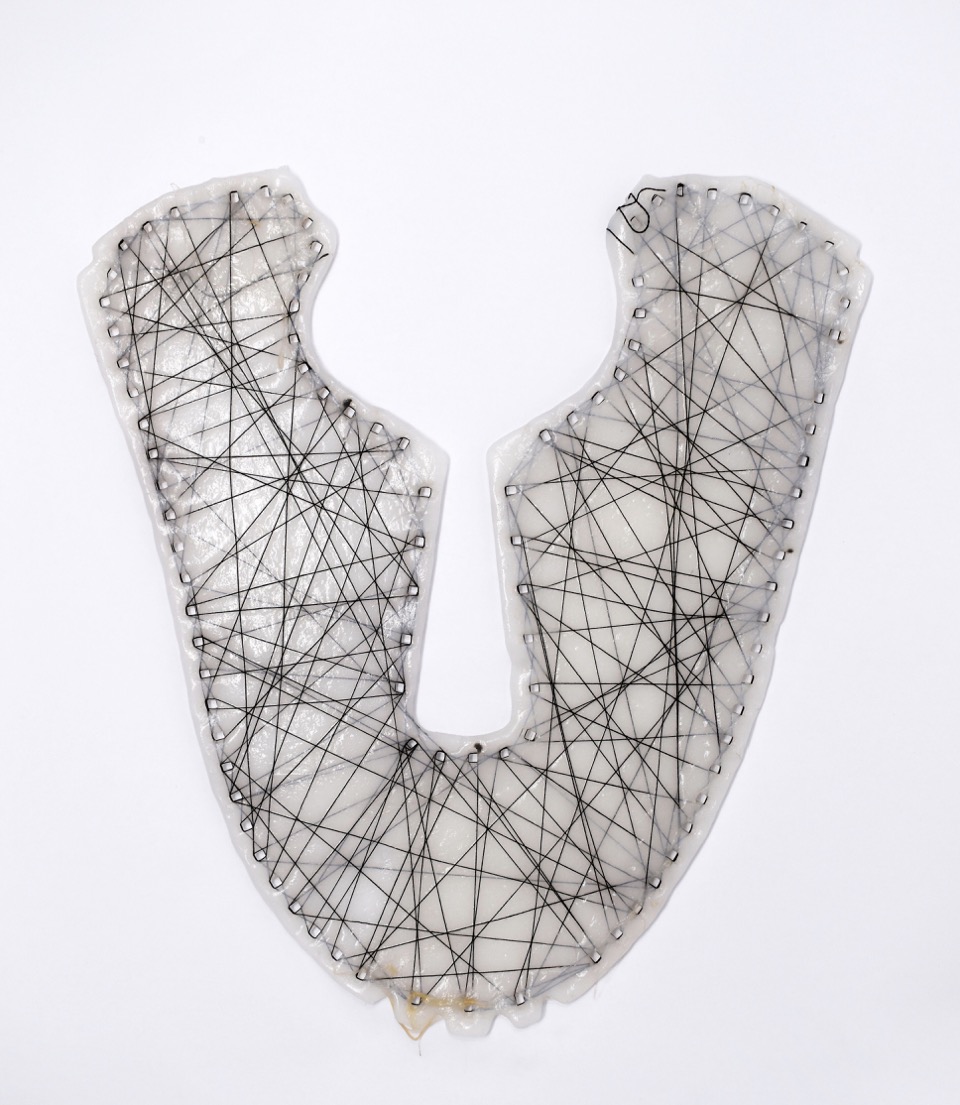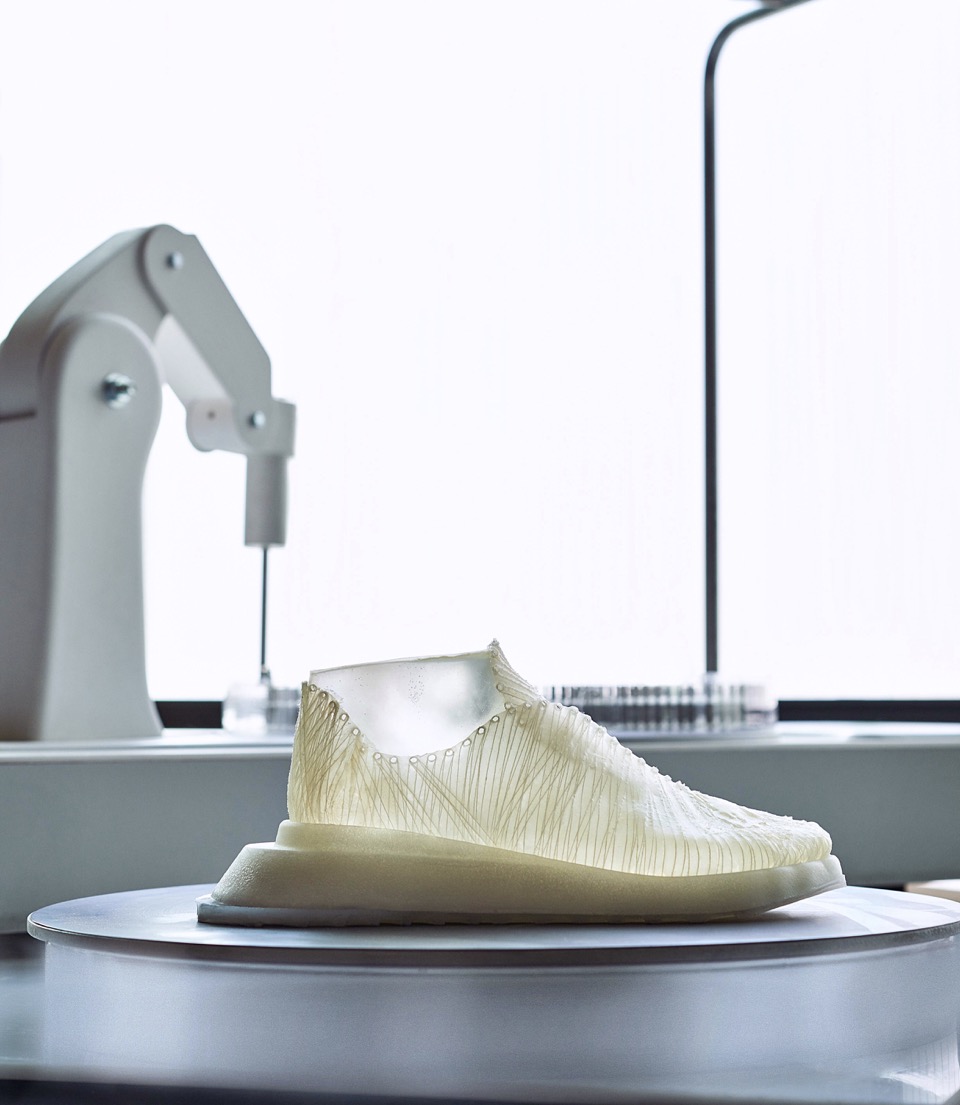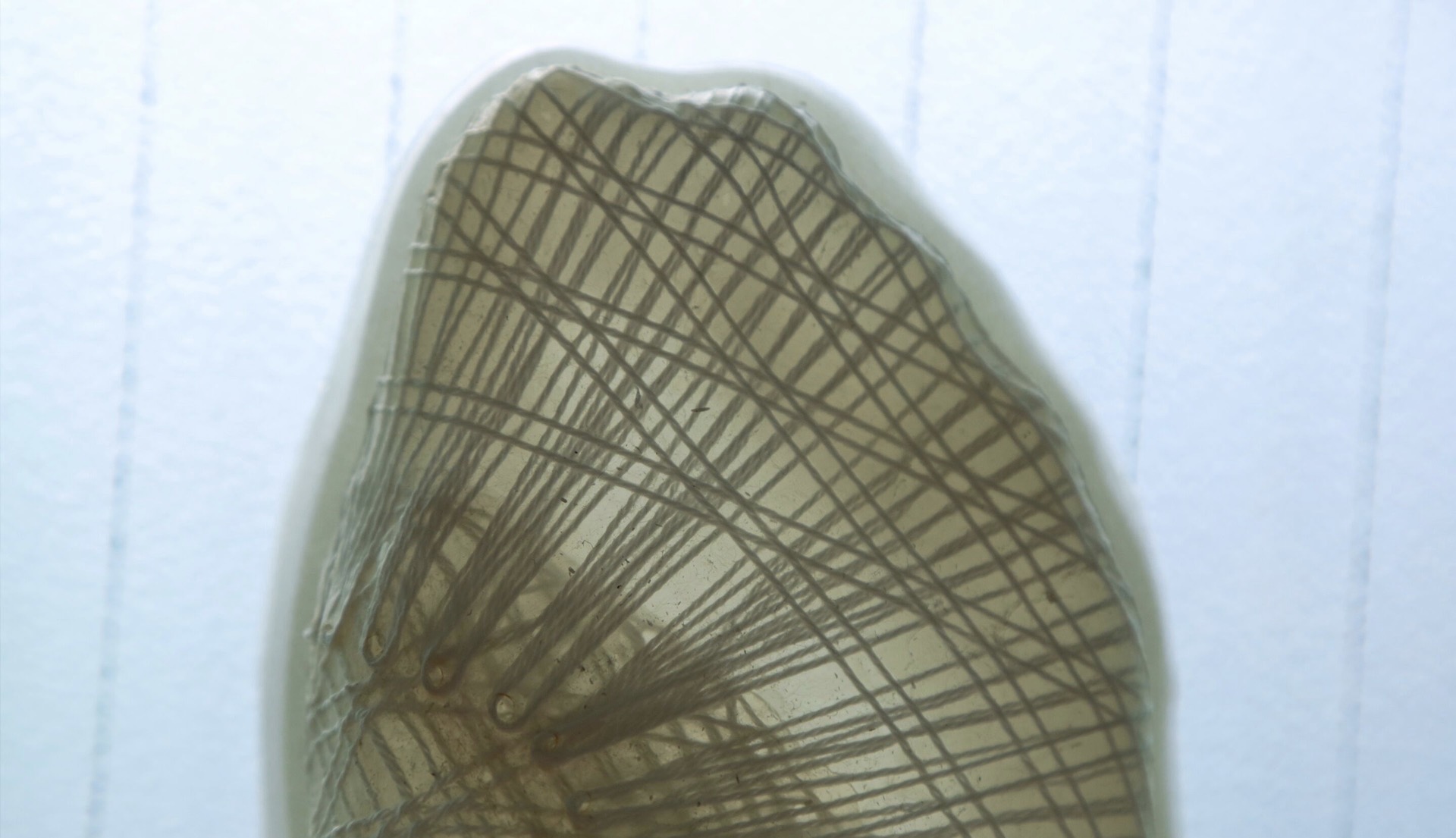Materials designer and creative researcher Jen Keane created her project ‘This is Grown’ whilst completing her Masters degree at Central Saint Martins. The project was born out of her frustration with plastics and lack of scientific research and design manifestations around ‘natural’ materials at the time.
Working in between the disciplines of design and science, technology and craft, she is inspired by notions of sustainability, and fascinated with new digital and biological tools. Her work explores how these technologies could be employed to design a new generation of hybrid materials, and perhaps change our approach to making altogether.


For This is Grown, Jen created an upper for a shoe where it is grown in a single piece with no sewing and one continuous yarn held into place by the cellulose produced by the bacteria. By taking this radical organism-driven approach to
material design, she was able to manipulate the growing process of k. rhaeticus bacteria, to employ it in a new form of ‘microbial weaving’.
The process optimizes the natural properties of bacterial cellulose to weave a new category of hybrid materials that are strong and lightweight, and allows the potential for entire patterns and products to be designed and grown to shape with little or no wastage.

Working in a similar way to traditional weaving, the warp was woven by Jen and then the bacteria grew the weft, on a nanoscale level. This technique offers huge potential creating opportunities to weave patterns not possible with traditional weaving and engineer material strength in multiple directions.
This process also creates incredibly lightweight, transparent and rivals its synthetic counterparts in tensile strength, the hybrid material created also offers huge potential for customization and application in numerous industries from high performance composites to biomedical applications.


As the designer, the project brings up some important ethical questions for Jen in terms of what the future of synthetic biology will mean as we begin to exercise our new knowledge of nature to try and solve our material problems. As a result we have to question what is really natural, and whether or not we are able to accept that we may not actually be collaborating with nature anymore but controlling it.
As we employ synthetic biology to control what the microbes actually produce and how and where they grow them, this will become an important dilemma that needs to be discussed and developed further.
